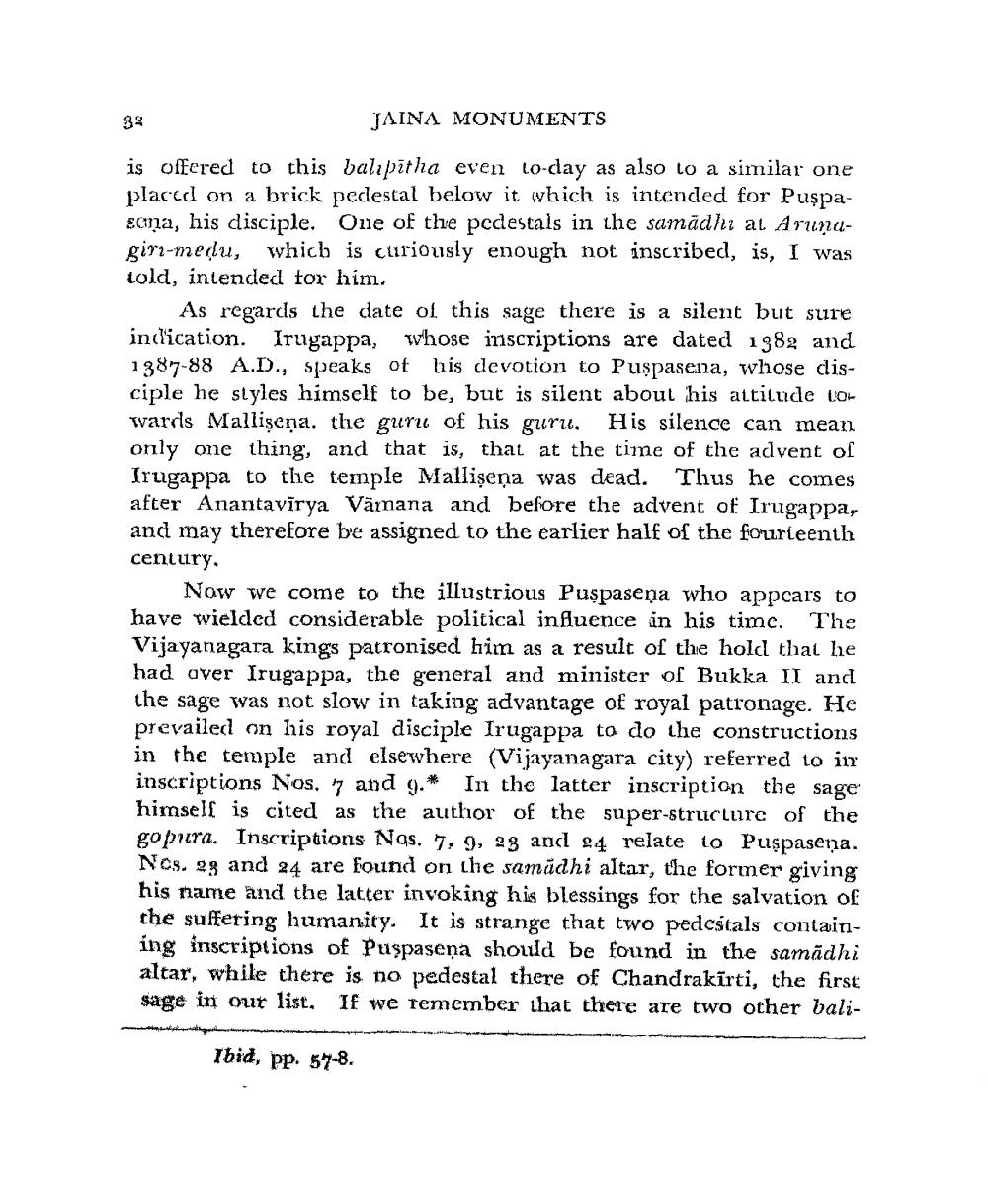________________
JAINA MONUMENTS
is offered to this balıpītha even lo-day as also to a similar one placed on a brick pedestal below it which is intended for Puşpasona, his disciple. One of the pedestals in the samādhz at Arunugirz-medu, which is curiously enough not inscribed, is, I was told, intended for him.
As regards the date of this sage there is a silent but sure indication. Irugappa, whose inscriptions are dat 1387-88 A.D., speaks of his devotion to Puspasena, whose disciple he styles himself to be, but is silent about his attitude tow warrls Mallişeņa. the guru of his guru. His silence can mean only one thing, and that is, that at the time of the advent of Irugappa to the temple Mallişeņa was dead. Thus he comes after Anantavirya Vāmana and before the advent of Irugappa, and may therefore be assigned to the earlier half of the fourteenth century.
Now we come to the illustrious Puşpaseņa who appcars to have wielded considerable political influence in his time. The Vijayanagara kings patronised him as a result of the hold that he had aver Irugappa, the general and minister of Bukka II and the sage was not slow in taking advantage of royal patronage. He prevailed on his royal disciple Irugappa to do the constructions in the temple and elsewhere (Vijayanagara city) referred to in inscriptions Nos, and 9.* In the latter inscription the sage himself is cited as the author of the super-structure of the gopura. Inscriptions Nas. 7, 9, 23 and 24 relate to Puspasena. Ncs. 23 and 24 are found on the samādhi altar, the former giving his name and the latter invoking his blessings for the salvation of the suffering humanity. It is strange that two pedestals containing inscriptions of Puspaseņa should be found in the samādhi altar, while there is no pedestal there of Chandrakīrti, the first sage in our list. If we remember that there are two other bali
Ibid, pp. 57-8.




